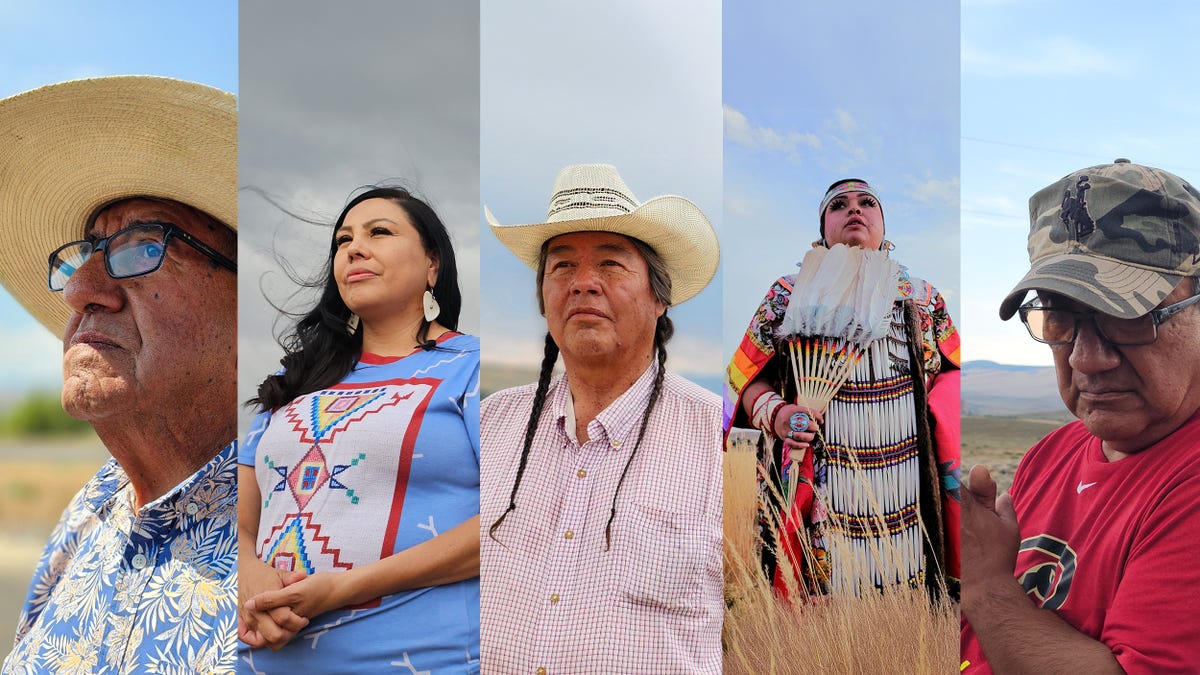California
California has no accredited Native American colleges. That could change.

It has been a generation since California had an accredited tribal college serving the state’s Native American residents. An Inland Empire college is trying to change that.
“We have more than 1.4 million American Indians living in California,” said Celeste Townsend, president of California Indian Nations College. “And yet not one (accredited) tribal college.”
Compare that to Oklahoma — the state has one-third the Native population of California but three tribal colleges.
“There’s something wrong there,” Townsend said. “We’re going to be changing that.”
CINC “started as a discussion around the table” in 2015, Townsend said, about 10 years after California’s previous accredited tribal college, Deganawidah-Quetzalcoatl University in Davis, lost its accreditation, spelling the end of it offering a full schedule of classes.
Tribal colleges and universities are a federally designated category of higher education institution, which are controlled and operated by federally recognized tribes.
CINC began offering classes in fall 2018, and graduated its first four students in 2019. Last year, 10 students graduated from the college, the largest class to date. The fall term began this year with 140 students attending classes.
The college currently leases space at two Palm Desert campuses, College of the Desert and UC Riverside Palm Desert, and it offers online and hybrid classes to allow students from throughout California and the country to attend the school.
CINC offers associates degrees, along with workshops and a Cahuilla language immersion program, with plans to offer more languages belonging to Southern California tribes. The school is in the process of adding Cahuilla language signage to its campus spaces.
That’s emblematic of what tribal colleges offer students, according to Townsend.
Historically, “when education involved American Indians, it was ‘remove the Indian, save the man,’ ” she said. “It wasn’t to educate us, it was to remove our identity.”
Traditional history books either misrepresent or obscure Native history, including how they were treated by European colonists, according to Townsend.
As a result, “we find that, with our students, they don’t have the sense of belonging in a traditional mainstream educational institution,” she said. “They don’t feel safe in those environments. Having a program for Native Americans is one thing, but having a whole environment … it just brings more of a home atmosphere and a safe place for learning.”
That’s what attracted Menifee resident Victoria Martinez to CINC.
“The feeling you get around school is community,” she said. “And it’s home.”
Martinez splits her time between Palomar College in San Diego County and CINC, pursuing a degree in psychology at one and studying Cahuilla at the other. But she says the contrast between the two is like night and day.
“The experience at California Indian Nations College is more like a family,” said Martinez, who serves as student government secretary and treasurer at CINC.
The school is currently in the second phase of the three-stage accreditation process. Federal accreditation would allow the college to apply for state and federal funding and students would be eligible for federal financial aid.
California is home to two other tribal colleges — California Tribal College in Woodland and Kumeyaay Community College in El Cajon — but neither is as far along in the accreditation process as CINC.
CINC receives no ongoing state or federal funds. Instead, the college has received most of its funding from Twenty-Nine Palms Band of Mission Indians near Twentynine Palms, which has given the college more than $9 million. It has also received funding from the San Manuel Band of Mission Indians near Highland and the Morongo Band of Mission Indians based near Banning.
In 2022, Assemblymembers James Ramos, D-Highland, and Eduardo Garcia, D-Coachella, helped CINC secure $5 million in state funding for the accreditation process. At the time, there were 35 federally accredited tribal colleges around the U.S., but none in California despite its significant number of Native residents.
According to the 2020 U.S. Census, there are more than 630,000 Californians, or about 1.6% of the state’s population, who identify as American Indian and Alaska Natives. Include those who identify as American Indian along with another race, and that number jumps to 1.4 million, or more than 3% of Californians.
Los Angeles, Orange, Riverside and San Bernardino counties, meanwhile, are home to about 42% of the state’s Native residents, census data shows.
“Some states have as many as two or three (Native colleges),” Ramos said. “California is home to more Native Americans than any state in the nation and it stands to reason that we should have one.”
He said tribal colleges provide an important accepting and welcoming environment for Native students.
“We have to be able to have an Indian college that then reaches out to the population and engages them in education, an education where they don’t have to worry about assimilation or their culture or even wearing their Native American regalia,” he said. “We’re still fighting those issues in the state of California.”
Ramos, the first Native American from a California tribe in the California Legislature, says there’s a great deal of bipartisan support for the college and Native issues generally in Sacramento.
“There’s a good bipartisan effort to try and correct some of these issues in the state of California, including education,” he said.
The $5 million from the state “starts to lay the groundwork” for accreditation, Ramos said. He hopes the process can be finished in less than two years.
He concedes that’s a “very aggressive” timetable.
“But I think we’re ready to go,” he said.

California
Top 25 California high school boys basketball rankings (12/26/2024)

The week between Christmas and New Year’s Day is always revealing for the best boys basketball teams in California and final days of the 2024 calendar year should be no different.
The Damien Classic and Torrey Pines Holiday Classic always present a window of what is in store for the rest of the season and separates the contenders and pretenders. Next weekend at the HoopHall Classic West in Gilbert (Ariz.), Jan. 2-4, will also give the elite teams time to strut their stuff.
There are nine teams among California’s Top 25 still unbeaten at Christmas, a pretty high number, including top-ranked St. John Bosco, No. 6 Riordan and No. 8 De La Salle and No. 9 Montgomery.
Note: Only teams that play for a CIF State California title were considered for this rankings, thus eliminating Prolific Prep of Napa Christian, which can and will play for a mythical national title. Notes and rankings below from Southern Section teams supplied by SBLive’s Tarek Fattal.
The Braves win their Trinity League opener over Orange Lutheran without Brandon McCoy and Elzie Harrington. Christian Collins and Max Ellis led the way. Next up: Platinum Division in Classic at Damien.
Roosevelt wins the Tarkanian Classic in Las Vegas, beating Notre Dame/Sherman Oaks in the final. Brayden Burries scored 26 points and Issac Williamson had 19.
Nik Khamenia notches 26 points, 10 rebounds and eight assists in a convincing win over JSerra, a team expected to earn an Open Division berth.
Notre Dame suffers its first loss in the Tarkanian Classic final to Roosevelt despite Tyran Stokes scoring 20 points. Lino Mark played just four minutes in an attempt to play while injured. (TYRAN STOKES DEBUT)
Four more wins started with 90-65 blowout of defending state D2 champion Oakland Tech behind 33 points and 10 points from Tounde Yessoufou, and a combined 45 from Julius and Malcolm Price along with Gunner Morinini. Yessoufou is averaging 29.8 points and 7.7 rebounds per game.
Won the Gridley Classic with wins over Branson (68-27), Clovis North (54-52) and previous No. 6 Salesian (52-51) thanks in part to tournament MVP Andrew Hilman (19 points). Texas Tech-bound Jasir Rencher and Irvine signee Nex Emeneke was also All-Tourney.
Pride lost their first regular-season game since 2022, 52-51 to Riordan, in finals of the Gridley Classic. Salesian missed two free throws with 1.2 seconds to play.
Win over Santa Margarita (61-57) to win the Vountour Classic was team’s most impressive. David Balogun, a rapidly improving 6-6 post, scored 29 to lead the way. Since then breathers over Mountain House (67-35), La Salle (76-26) and Sacred Heart Cathedral (79-39).
The Aztecs from San Diego won five games last week, including four at the Tarkanian Classic to take the Nike Division championship behind division’s Most Outstanding Player J.J. Sanchez, who had 22 points in the finals.
Eagles’ only loss comes this week to unbeaten NorCal power De La Salle, but bounces back with a win over Murrieta Valley.
Trailblazers beat Millikan 87-33 this past week.
The Lions get a taste of Open Division-level hoops in a 65-50 loss to Harvard-Westlake.
Redondo Union is picking up Open Division playoff buzz.
La Mirada has been idle since Dec. 14.
Coach Paul Tait is enthused by the play of sophomore point guard Dominic Loehle.
After lopsided win over St. Augustine (77-54), recorded tough wins over Sage Creek (75-66), Mission Hills (67-59) and La Jolla Country Day (80-68).
Monarchs have won five of their last six.
Pius went 2-2 at the Tarkanian Classic.
Jasone Crowe Jr. is averaging 37 points per game.
Had won four straight before losing 63-54 to Brophy College Prep of Phoenix Ariz. (63-54).
Quality win over Pacifica Christian of Orange County without Jeremiah Hampton was impressive. JJ Harris and Louis Bond impressed.
Canyon has won five straight. Brandon Benjamin averaging 30+ points a game.
Damien without big man Nate Garcia (injured).
Twelve straight wins isn’t a bad way to start the season. Defense a big key, holding opponents under 50 seven times, including three straight games limiting opponents to 49 in wins over Riverside poly (61-49), Salesian Los Angeles (93-49) and Wiseburn-Da Vinci (61-49).
Cougars last win came against Long Beach Poly on Dec. 14.
California
California has 15 of 25 priciest places to live in US

No. 1 San Francisco costs 18.2% more than typical US metro. No. 2 LA-OC is 15.5% more expensive.
Subscribe to continue reading this article.
Already subscribed? To login in, click here.
Originally Published:
California
California Roots Threaten JuJu Watkins’ NCAA Road to Rivaling Caitlin Clark

Ever since Caitlin Clark left the NCAA to set records in the WNBA, the hunt for the next generational basketball talent has intensified. Among the emerging stars, JuJu Watkins stands out with her electrifying performances for USC and record-breaking milestones. But while her game dazzles on the court, her California roots and unique circumstances create hurdles that may hinder her quest to rival Clark’s legendary NCAA career.
On the latest episode of Fearless with Jason Whitlock, Whitlock tackled the issue, highlighting the contrasting environments between Clark’s Iowa and Watkins’ Los Angeles.
“Well, Caitlin Clark was in Iowa in the middle of nowhere. She wasn’t in the entertainment capital of the world. She wasn’t in a city that had 75-degree weather year-round and open beaches. She went off or she grew up in and continued to play in a little isolated area of the country where people are starved for entertainment. And so she built a huge following right there in the state of Iowa, her home state,” he said.
ADVERTISEMENT
Article continues below this ad
The deeper issue, according to Whitlock, is the cultural and entertainment saturation of Los Angeles, where sports often compete with numerous distractions for attention. In contrast, Clark thrived in a basketball-centric environment, with little competition for local and statewide support. While Watkins’ environment may pose unique challenges, her talent remains undeniable.
She recently made history as the fastest Power Five player in women’s college basketball to reach 1,000 career points, accomplishing the feat in just 38 games—two fewer than Clark’s record. With season averages of 24.8 points, 5.8 rebounds, and 3.8 assists on 46.2% shooting, Watkins is unquestionably a dominant force. Yet, as Jason Whitlock put it, the question persists: Can she cultivate the same level of national adoration that Clark commanded?
Balancing brilliance: Can JuJu Watkins thrive amid criticism and California’s spotlight?
ADVERTISEMENT
Article continues below this ad
Adding to the debate, Rachel DeMita voiced concerns over how USC is managing Watkins’ playing time on her own podcast. “I don’t think that’s what JuJu needs for the development of her game,” DeMita said, suggesting that keeping Watkins on the court for extended minutes might be more about stat-padding than fostering her growth as a player.
via Imago
Dec 21, 2024; Hartford, Connecticut, USA; USC Trojans guard JuJu Watkins (12) drives the ball agains UConn Huskies guard Paige Bueckers (5) and guard Kaitlyn Chen (20) in the second half at XL Center. Mandatory Credit: David Butler II-Imagn Images
Such a strategy could also increase her risk of injury, a significant concern given Watkins’ pivotal role for USC.
ADVERTISEMENT
Article continues below this ad
Despite these challenges, Watkins has demonstrated resilience and poise. Her performance this season reflects her ability to adapt and excel under pressure. However, her journey to rival Caitlin Clark’s legacy will require more than individual brilliance. Watkins must navigate the complexities of playing in a city where attention is fragmented, balancing her development with the need to draw a larger following.
Whether she can carve out her own path and emerge as a player of Clark’s stature remains uncertain. For now, her record-breaking performances and undeniable talent keep her firmly in the conversation, as the basketball world watches to see if she can overcome the challenges of her California roots and fulfill her potential as the next NCAA superstar.
-
/cdn.vox-cdn.com/uploads/chorus_asset/file/24924653/236780_Google_AntiTrust_Trial_Custom_Art_CVirginia__0003_1.png)
/cdn.vox-cdn.com/uploads/chorus_asset/file/24924653/236780_Google_AntiTrust_Trial_Custom_Art_CVirginia__0003_1.png) Technology6 days ago
Technology6 days agoGoogle’s counteroffer to the government trying to break it up is unbundling Android apps
-

 News7 days ago
News7 days agoNovo Nordisk shares tumble as weight-loss drug trial data disappoints
-

 Politics7 days ago
Politics7 days agoIllegal immigrant sexually abused child in the U.S. after being removed from the country five times
-

 Entertainment1 week ago
Entertainment1 week ago'It's a little holiday gift': Inside the Weeknd's free Santa Monica show for his biggest fans
-

 Lifestyle1 week ago
Lifestyle1 week agoThink you can't dance? Get up and try these tips in our comic. We dare you!
-
/cdn.vox-cdn.com/uploads/chorus_asset/file/25672934/Metaphor_Key_Art_Horizontal.png)
/cdn.vox-cdn.com/uploads/chorus_asset/file/25672934/Metaphor_Key_Art_Horizontal.png) Technology2 days ago
Technology2 days agoThere’s a reason Metaphor: ReFantanzio’s battle music sounds as cool as it does
-

 Technology1 week ago
Technology1 week agoFox News AI Newsletter: OpenAI responds to Elon Musk's lawsuit
-

 News3 days ago
News3 days agoFrance’s new premier selects Eric Lombard as finance minister
















/cdn.vox-cdn.com/uploads/chorus_asset/file/25805991/2191410214.jpg)











